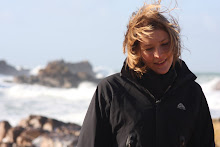Portugal has a long history of preserving fish, it seems to have started in Peniche with two main ways of preservation recorded. Either drying on racks in the sun or as Roman remains have shown, they were salting fish and putting it into clay pots. The first modern commercial preservation factory was started in 1853 and put locally caught sardines in olive oil. In fact this company are still doing it today with a wider variety of fish canned - http://ramirez.pt/.
As time went on canning factories used new canning technology to preserve the fish for longer, opening up the international market and by the 1980s there were over 150 canning factories in Portugal. However, canned fish went out of fashion and as processing costs grew many factories closed down. In fact in the year 2000 there were just 20 factories still canning fish in Portugal.
In recent years canned fish has made a come back in Portugal, it's become a fashion choice, with brands spending their money on nostalgic packaging and offering a 'high-end' canned fish. Bars in Lisbon and Porto specialise in offering a drink and a can of sardines, where you can choose your brand from the huge choice available behind the bar. Tourist shops sell expensive cans for the ultimate Portuguese gift. The choice is huge, from traditional sardines in olive oil to smoked cod or eels cooked in brine. Old style shops specialising in canned fish have become the 'must visit' place while walking in the back streets of Lisbon or Porto.
In recent years O Mudo Fantastico das Conservas Portuguesas (or the fantastic world of Portuguese conserves) has jumped on the canned fish bandwagon. The brand has been launched in an attempt to reach the very lucrative tourist market and is even available in a large (and no doubt expensive) commercial space at Lisbon Airport.
The shop is pure whimsy, like a fairground, bright colours, bold design and a huge choice of canned fish (all at a price). A huge amount must have been spent on the brand, the packaging is great, wonderfully traditional with a modern twist.
All of this translates to the supermarket, where the canned fish aisle has grown over recent years, offering the consumer a wider choice of premium and low costs brands, from sardines to tuna or cod to clams.
For me, the love is not the canned fish itself, I can take it or leave it. But I love the dedication the design and marketing team have put into the branding. From the old school to the modern, the choice of brands available for tinned tuna and sardines is overwhelming. Judge a book by its cover and go for the brand that suits you...although I'd always steer clear of canned eels!, especially at 13 Euros a can!
 |
| Tuna from Ramierz |
As time went on canning factories used new canning technology to preserve the fish for longer, opening up the international market and by the 1980s there were over 150 canning factories in Portugal. However, canned fish went out of fashion and as processing costs grew many factories closed down. In fact in the year 2000 there were just 20 factories still canning fish in Portugal.
In recent years canned fish has made a come back in Portugal, it's become a fashion choice, with brands spending their money on nostalgic packaging and offering a 'high-end' canned fish. Bars in Lisbon and Porto specialise in offering a drink and a can of sardines, where you can choose your brand from the huge choice available behind the bar. Tourist shops sell expensive cans for the ultimate Portuguese gift. The choice is huge, from traditional sardines in olive oil to smoked cod or eels cooked in brine. Old style shops specialising in canned fish have become the 'must visit' place while walking in the back streets of Lisbon or Porto.
In recent years O Mudo Fantastico das Conservas Portuguesas (or the fantastic world of Portuguese conserves) has jumped on the canned fish bandwagon. The brand has been launched in an attempt to reach the very lucrative tourist market and is even available in a large (and no doubt expensive) commercial space at Lisbon Airport.
The shop is pure whimsy, like a fairground, bright colours, bold design and a huge choice of canned fish (all at a price). A huge amount must have been spent on the brand, the packaging is great, wonderfully traditional with a modern twist.
All of this translates to the supermarket, where the canned fish aisle has grown over recent years, offering the consumer a wider choice of premium and low costs brands, from sardines to tuna or cod to clams.
For me, the love is not the canned fish itself, I can take it or leave it. But I love the dedication the design and marketing team have put into the branding. From the old school to the modern, the choice of brands available for tinned tuna and sardines is overwhelming. Judge a book by its cover and go for the brand that suits you...although I'd always steer clear of canned eels!, especially at 13 Euros a can!






Comments
Post a Comment